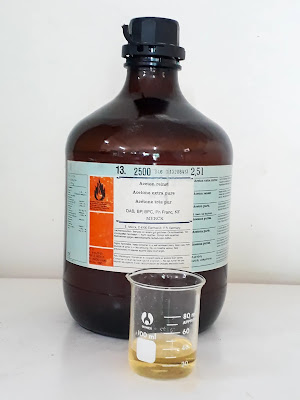Contents
hide
CHEMICAL PRODUCT IDENTIFICATION
- Product Name: Acetone.
- Synonyms: 2-Propanone, Dimethyl Ketone, Propanone, beta-Ketopropane.
- Signal word: Danger.
- read – Acetone SDS!
COMPOSITION, INFORMATION ON INGREDIENTS
- CAS No: 67-64-1.
- Molecular Formula: C3H6O or CH3COCH3.
- Molecular Weight: 58.08 g/mol.
- Ingredient CAS No. Percentage: Acetone 67-64-1 100%
-
HAZARDS IDENTIFICATION
- Highly flammable liquid & vapor.
- Keep heat, sparks, open flames, & hot surfaces at a distance.
- Avoid smoking.
Eye irritation
- Seriously irritates the eyes
Single dose to specific target organ toxicity; narcotic effects
- May make you feel sleepy or swimmy.
- Avoid breathing mist, vapors or spray.
Potential Health Effects
- Inhalation: Inhalation of high concentrations of vapor may cause drowsiness, headache, nausea, and dizziness. Prolonged or repeated exposure may cause respiratory tract irritation and central nervous system effects.
- Skin Contact: Skin contact may cause irritation, dryness, & cracking. Prolonged or repeated exposure might cause mild skin irritation.
- Eye Contact: Eye contact may cause irritation, redness, & pain.
- Ingestion: Ingestion of small amounts is not likely to cause harm. Ingestion of large amounts may cause nausea, vomiting, & central nervous system effects.
FIRST-AID MEASURES
- Inhalation: If inhaled, remove to fresh air. If breathing is difficult, give oxygen. If not breathing, give artificial respiration. Get medical attention immediately.
- Skin Contact: Flush the affected area with water for at least 15 minutes. Remove contaminated clothing & shoes. Get medical attention immediately.
- Eye Contact: Flush eyes with water for at least 15 minutes. Get medical attention immediately.
- Ingestion: Do not induce vomiting. Get medical attention immediately.
FIRE-FIGHTING MEASURES
- The risk of fire is caused by heat, flame, or powerful oxidizers.
- Flash Point: -17 °C.
- Autoignition Temperature: 465 °C
- Explosive(Flammable) Limits: 2.6%(lower) – 12.8 % (upper)
- Toxic gases: Could be released during decomposition when heated.
- Extinguishing Media: Water spray, foam, dry chemical, or CO2.
- Special Fire Fighting Procedures: Wear self-contained breathing apparatus & protective clothing to prevent contact with skin & eyes.
ACCIDENTAL RELEASE MEASURES
- Personal Precautions: Wear personal protective equipment. Evacuate the area & ventilate.
- Environmental Precautions: Do not discharge into a natural watercourse without prior consent.
- Methods for Cleaning Up: Absorb the spill with an inert absorbent material (e.g. vermiculite, sand, or earth) & place it in a suitable container for disposal.
HANDLING & STORAGE
Handling:
- Avoid contact with skin, eyes, & clothing. Avoid breathing vapor or mist. Use with adequate ventilation. Keep away from heat, sparks, & open flames.
Storage:
- Store in a cool, dry place. Keep the container closed when not in use.
- Store alongside halogenated hydrocarbons, ethers, & ketones.
- Use only in a well-ventilated room or under a hood.
- Take safety precautions to avoid static discharge.
EXPOSURE CONTROLS, PERSONAL PROTECTION
- Respiratory Protection: Use a NIOSH-approved respirator when exposure limits are exceeded.
- Eye Protection: Use safety goggles or face shields.
- Skin Protection: Use protective gloves, aprons, & boots.
- Hygiene Measures: Wash hands thoroughly before eating, drinking, smoking, or using the toilet.
PHYSICAL & CHEMICAL PROPERTIES
- Uncolored liquid A sweet, strong, nail polish remover-like smell.
- Boiling point: 56.5 °C
- Density: 0.79
- Melting point: -94.6 °C
- Vapor density: 2.00
- Solubility: Alcohol, water, & a variety of other organic solvents are all miscible.
STABILITY & REACTIVITY
- It is stable.
- Reaction involving halogenated chemicals, potent oxidizing agents, & the potential for explosion.
- Good shelf life if properly stored.
TOXICOLOGICAL INFORMATION
- Acute effects: dizziness, irritation to the eyes and respiratory tract, & CNS depression.
- Chronic effects: Eczema (Dermatitis).
- Targeted organs: kidneys, the CNS, & the respiratory system.
- LD50 for ORL-RAT: 5800 mg/kg
- LC50 for IHL-RAT: 50,100 mg/m3/8H
- LDL0 for SKN-RBT: 20 mL/kg
ECOLOGICAL INFORMATION
- Acetone is a colorless liquid with a sweet flavor & smell that is a volatile, flammable chemical. It frequently serves as a solvent for a variety of domestic & industrial applications. Acetone is extremely combustible & needs to be handled carefully. When released into the environment, it poses a risk & may have a negative impact on aquatic life. Acetone vapor inhalation might make you feel lightheaded, give you a headache, & irritate your eyes, nose, & throat. Acetone exposure to the skin can result in dryness and inflammation. Long-term exposure to high acetone concentrations can irritate the respiratory tract & depress the central nervous system. Acetone should be kept in a well-ventilated environment, away from heat sources & ignition sources. It must not be released into the environment unless it is properly disposed of.
DISPOSAL CONSIDERATIONS
- Before moving forward, please research all applicable federal, state, & local laws & regulations.
TRANSPORT INFORMATION
- Delivery name: Acetone. Class 3 hazard, Flammable Liquid. UN 1090 is its number.
REGULATORY INFORMATION
- RCRA code U002, TSCA listing (200-662-2), & EINECS listing.
OTHER INFORMATION
This Acetone SDS is intended as a piece of advice & is based on data & tests that are likely to be reliable. I don’t guarantee the data’s correctness or completeness & I’m not responsible for any resulting losses. The information is only being provided for your review, research, & verification. I DO NOT ASSUME RESPONSIBILITY AND EXPRESSLY DISCLAIM LIABILITY FOR LOSS, DAMAGE, OR EXPENSE RESULTING FROM OR IN ANY WAY CONNECTED WITH THE HANDLING, STORAGE, USE, OR DISPOSAL OF THIS PRODUCT FOR THE FOREGOING AND OTHER REASONS.

CONCLUSION
Acetone is a chemical that is very flammable and volatile. The eyes, skin, and respiratory system are irritated, and continuous exposure might have detrimental effects on one’s health. When handling, storing, & disposing of acetone, it’s crucial to exercise caution & use the appropriate safety gear and clothing. One must follow Acetone SDS before handling this product.
